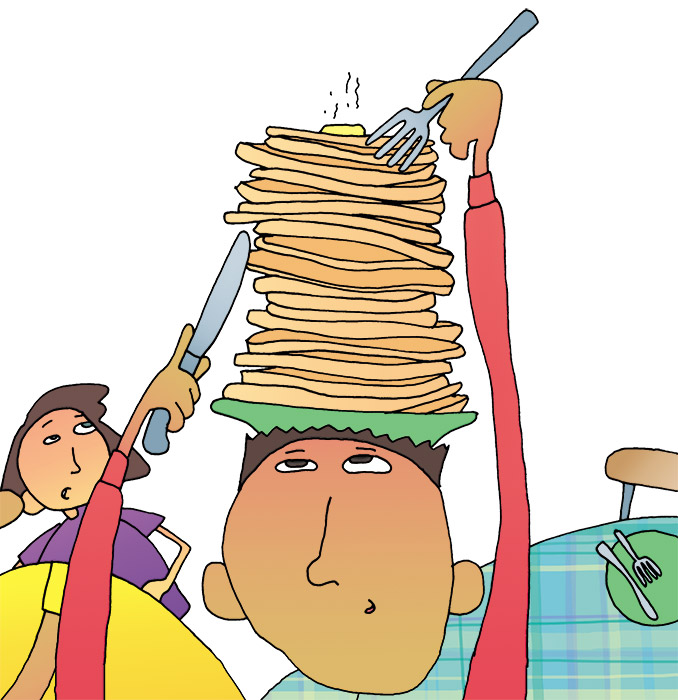
Writing is a game of show and tell. “Telling” is the most common move. It conveys information to a reader. Your students probably feel most comfortable telling with their writing. “Showing” is a trickier move, but when done skillfully, its effect is magical. Your students can bring descriptions to life by showing through sensory details.
Understanding how and when to show and tell will help your students use both strategies more effectively in their writing.
Telling
Students most often tell when they write explanatory texts such as reports and news stories. Facts, statistics, examples, and definitions help your students tell information to readers:
Salt is one of Earth’s most important minerals. It comes from rocks in the ocean and can be found nearly everywhere in the world.
Your students might even use a telling voice in persuasive writing:
The bleachers in the gymnasium are in poor shape. Some of the boards are cracked, which makes them uncomfortable to sit on for very long.
When your students write descriptions, narratives, or stories, telling may not be the best choice:
Our raft approached a set of rapids. They were the biggest challenge we faced. We weren’t sure we would make it. We made it.
Showing
Showing brings experiences and descriptions to life. Your students can make readers feel, hear, smell, taste, and see what is happening rather than just learning about it second-hand. Here’s how sensory details enliven the dull description from above:
The rumbling grew as our raft bobbed toward the drop in the river. The air moistened and smelled of morning dew. Ahead of us, copper water plunged down a set of boiling rapids, which carved their curving way among jagged cliffs. My mouth went dry with a tang of fear. “Hold on, everybody!” I shouted.
View Minilesson for "Writing Descriptions That 'Show' Instead of 'Tell'"
Did you notice the sensory details at work? The following chart shows them.
| Sight | Sound | Smell | Taste | Touch |
|---|---|---|---|---|
| Copper water Curving river Jagged cliffs |
Rumbling Boiling “Hold on, everybody!” |
Morning dew | Tang of fear | Bobbing raft Moist air Dry mouth |
These details let the reader experience the sights, sounds, and smells of the waterfall for themselves. That’s the magic of showing and why it is fundamental to storytelling; it conveys experience through associations and immediacy.
Teaching Students to Show
Your students can use showing to create vivid narratives, poems, and descriptions. Before students even start to write, have them collect sensory details about their topics. Show them how to make and fill in sensory charts like the one below.
| Sight | Sound | Smell | Taste | Touch |
|---|---|---|---|---|
As your students write their drafts, have them use details from their sensory charts. Remind them that dialogue adds sounds, and action adds sights. When your students revise, encourage them to replace descriptions that tell with details that show.
View Minilesson for "Writing a Showing Paragraph"
Mixing Showing and Telling
Neither writing move needs to be mutually exclusive. Your students can mix them to great effect.
For example, your students can enhance their explanatory writing with anecdotes—brief stories that show an idea. Here’s how one student used an anecdote to begin a science report:
In the ocean, two hungry dolphins pick up speed when they spot a school of flying fish. Sensing danger, the fish dart ahead. Soon they are cruising through the deep blue water at 20 miles an hour. As the dolphins get closer, the flying fish break through the surface, spread their fins like wings, and take off.
Amateur explorers have called them “dragonflies of the deep,” but flying fish are most definitely fish.
A nice interplay is at work in the example. The anecdote uses showing (specifically “sight” details) to introduce the topic by transporting readers into a great ocean chase. The second paragraph uses telling to clarify the focus of the essay.
Your students can also use a mix of showing and telling in narratives, too. Showing makes the reader feel like part of the story by evoking the senses. Telling supplies information in a quick manner, helping the story move along.
At sunset, we built a fire and huddled near it (telling). Bright red flames danced and crackled. Goose bumps prickled my bare skin, and my breath looked like plumes of smoke. “Needs more wood,” Mary said. (showing)
Of course, overreliance on telling in narrative writing can cause readers to lose interest. That’s why writers are often told show, don’t tell. When teaching narrative units, remind your students to break up strings of telling details with sensory details, dialogue, and action.
So how can you help students decide what move to use? Tell them to think about their purpose. When they want to give the reader information, they should use telling. When they want the reader to experience a story, they should use showing.
Want more on showing and telling? Check out this infographic.